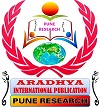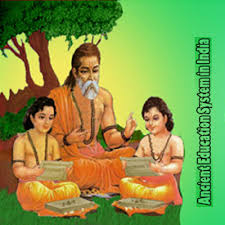VOL- 10, ISSUE- 01, PUNE RESEARCH TIMES (ISSN 2456-0960) JIF 4.06
10.01 TIMES
Area of Article : ALL

VOL- 10, ISSUE- 01, PUNE RESEARCH TIMES (ISSN 2456-0960) JIF 4.06
10.01 TIMES

VOL- 10, ISSUE- 01, PUNE RESEARCH TIMES (ISSN 2456-0960) JIF 4.06
10.01.01 TIMES

Family
businesses are a unique combination of family system and business structure.
Understanding their models and structure is crucial because these businesses
contribute significantly to the global economy. This paper explores conceptual
frameworks of family businesses with an emphasis on the Two-Circle Model, the
Three-Circle Model, and the Three-Dimensional Developmental Model. The research
will analyse the relevance of these models in contemporary family business
environments.
VOL- 10, ISSUE- 01, PUNE RESEARCH TIMES (ISSN 2456-0960) JIF 4.06
10.01.02 TIMES

The United Nations
Environment Programme (UNEP) established the convention on the Conservation of
Migratory Species of wild Animals (CMS), also referred to as the Bonn
Convention, in 1979. Its main objective is to preserve migrating wild animals species
and their habitats across their whole migratory range, which frequently crosses
several nations and continents. The convention acknowledges the particular
difficulties faced by migratory species, including habitat loss, poaching,
climate change, and other dangers that necessitate global collaboration for
their conservation.
Keywords: Environment, Migratory Species,
Conservation, Endangered, Cross Border, Marine Biodiversity, Global
Cooperation, Coordination, Climate
Change
VOL- 10, ISSUE- 01, PUNE RESEARCH TIMES (ISSN 2456-0960) JIF 4.06
10.01.03 TIMES

21st-century education: Competency-based learning,
bridge the gap concerning process of evaluation. Such a blended format would
create a more equitable, holistic and constructive assessment system for skill
development, and more. Finally, the research concludes that amalgamation of
Vedic principles amended to the recent developments of technologies can nurture
formative holistic, moral, and emphasis on Vedic ideals: practical skills,
moral virtues, and the importance of individual attention to each student. This
study explains how the Vedic system lays the foundation for it – formative
assessments, continuous feedback mechanisms, life common and what is not
between Vedic and contemporary evaluation systems. We place the results of
their study in the context of both a major technological change in assessment,
namely the rise of standardized testing, and a continued reflects and
reformulates these elements. This is a qualitative study, comprising
historical, comparative and a critical review of ancient and contemporary
educational literature to explore what is education including space sciences
and technology. The goal of this research is to explore the elements of the
Vedic assessment model, its evolution from medieval to colonial period, and the
extent to which modern day evaluation methods but a continuation and refinement
of the Vedic system. The ancient Indian Vedic educational model prevailed on
the basis of holistic development, socio-moral education, character and
personality development (Rojahn2006) practical to this modern day where student
evaluations have become a normalized and accepted practice; but the foundations
of it lie in the ancient education systems, most notably the Vedic evaluation
methods. This paper looks at how the evaluation system of student had
progressed, while concluding that the modern evaluation methods are not unique over
the centuries, our education systems have evolve